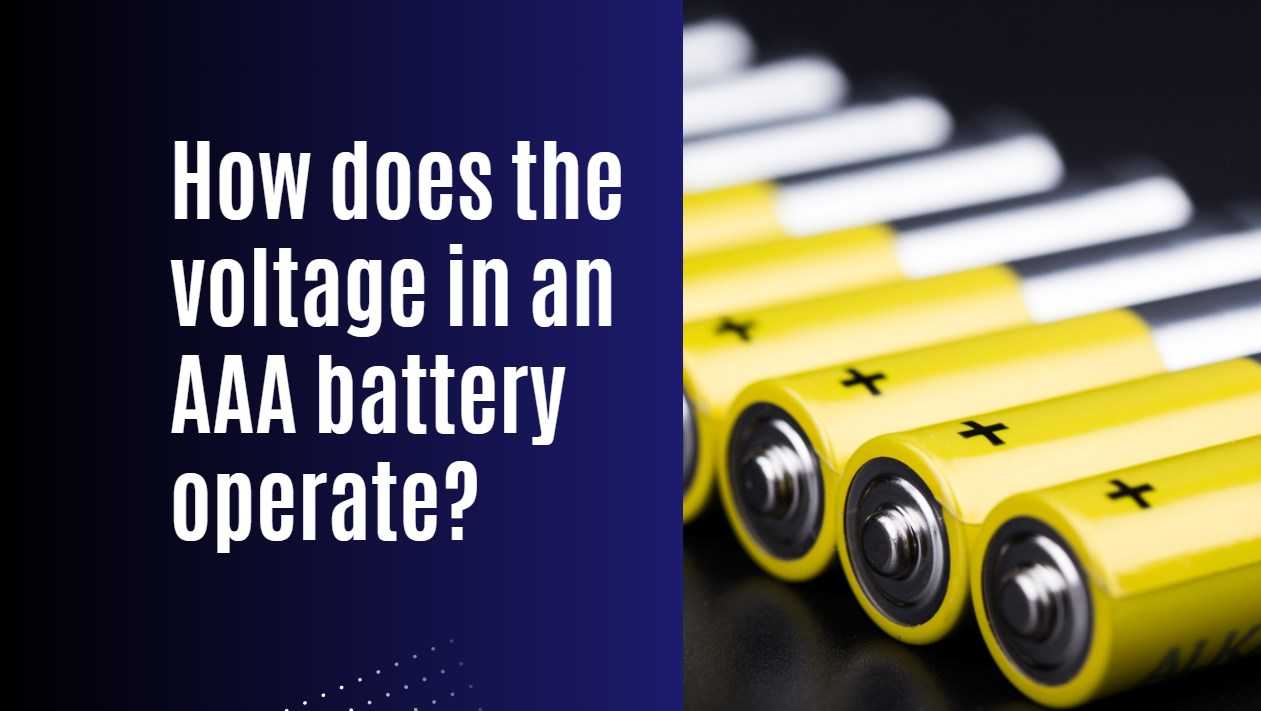The voltage in an AAA battery operates primarily at a nominal value of 1.5 volts for alkaline batteries. This voltage is crucial for powering low-drain devices such as remote controls and flashlights. Rechargeable AAA batteries, like NiMH, typically have a lower nominal voltage of 1.2 volts. The voltage can fluctuate based on the battery’s state of charge and the device’s energy demands.
Understanding AAA Battery Voltage
AAA batteries are widely used in various household devices, and understanding their voltage characteristics is essential for optimal performance. The nominal voltage of 1.5 volts is standard for alkaline AAA batteries, while rechargeable variants like NiMH usually operate at 1.2 volts.
Key Voltage Characteristics:
- Nominal Voltage: The standard operating voltage for alkaline AAA batteries is 1.5V, which ensures adequate power delivery for most devices.
- Rechargeable Batteries: NiMH rechargeable AAA batteries typically provide around 1.2V, which is sufficient for many applications but may not be ideal for all devices.
- Voltage Drop: As batteries discharge, their voltage can drop below the nominal value, affecting device performance. Alkaline batteries may drop to around 0.9V under load.
Factors Affecting Voltage
Several factors influence the voltage output of an AAA battery:
- Temperature: Extreme temperatures can affect the chemical reactions within the battery, leading to reduced voltage output.
- Battery Quality: High-quality batteries maintain voltage better over time compared to cheaper alternatives.
- Device Power Consumption: Devices that require more power can cause a more significant voltage drop, especially if the battery is near depletion.
Voltage Testing with a Voltmeter
To accurately assess the voltage of an AAA battery, one can use a voltmeter:
- Set the voltmeter to the DC voltage setting.
- Connect the red probe to the positive terminal and the black probe to the negative terminal of the battery.
- A reading above 1.3V indicates that the battery still holds a charge, while readings below this suggest it may be nearing depletion.
Latest News
Recent advancements in battery technology have focused on improving energy density and longevity for AAA batteries. Manufacturers are now exploring eco-friendly materials and designs that enhance performance while reducing environmental impact. The shift towards rechargeable options is also gaining traction, as consumers seek sustainable solutions for everyday power needs.
Redway Expert Comment
In our experience at Redway Battery, understanding the voltage characteristics of AAA batteries is crucial for ensuring optimal device performance. The nominal voltage of 1.5V for alkaline batteries provides reliable power for low-drain devices, while rechargeable options offer flexibility with slightly lower voltages. As technology advances, we anticipate further improvements in battery efficiency and sustainability.”By recognizing these factors and employing proper testing methods, users can maximize their devices’ efficiency and lifespan while ensuring reliable operation across various applications.




